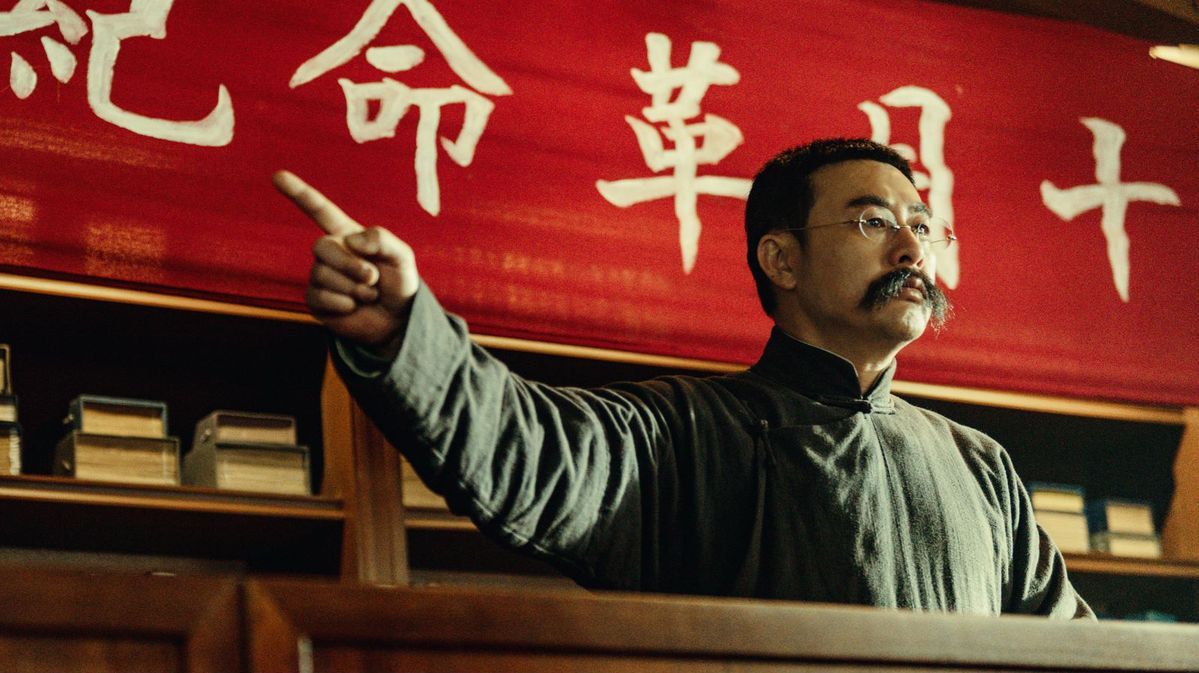The Snake in the Nest: Understanding the CCP's Infiltration Techniques

I. Introduction
The political landscape of the world is an intricate tapestry, wrought with the threads of diplomacy, covert tactics, and at times, subversion. Among the myriad players, the Chinese Communist Party (CCP) has often been portrayed as the quintessential serpent in this global nest, due to its alleged practices of infiltration and ideological diffusion[1]
In a hushed, steady descent, akin to a snake easing into a nest, the CCP is claimed to have woven its influence subtly yet surely into domestic and global institutions. However, it's important to view these allegations within a wider perspective, as part of the complex jigsaw puzzle of global politics, where every nation has its own unique set of strategies. These strategies are employed differently depending on the system which governs the nation, not necessarily based on the peoples of those nations.
It is essential to establish an understanding that extends beyond broad-brush strokes. China, as a nation with millennia of rich culture and history, and the Chinese people, with their diverse array of traditions, aspirations, and experiences, cannot and should not be equated with the political entity that is the CCP. The two are as distinct as the threads in the aforementioned tapestry –intertwined based on proximity, yet each with its own unique character. The thread that represents the Chinese people should be considered ensnared to the point of being strangled by that of the CCP.
The actions and policies of the CCP do not encapsulate the totality of China or its people, just as the actions of any government or political organization do not fully define their respective nations or cultures. To conflate the two would be to oversimplify a dynamic, multi-faceted relationship, much like reducing a symphony to a single note. This is a particularly significant distinction to remember as we navigate through this exploration of the CCP's alleged infiltration techniques, ensuring a comprehensive understanding that doesn't stereotype or unjustly associate a group or a country based on the actions of its political entity.
In our exploration, let us strive to lift the veil off the elusive tactics and strategies, shedding light on their intricacies and implications, all while maintaining a clear distinction between the China, its people, and the CCP.

II. The CCP's Academic Infiltration
The early 20th century was a tumultuous period for China, with the nation caught in the throes of significant ideological and political transformations. The end of World War II marked the onset of the intense civil war between the ruling Guomindang (Nationalist Party) and the CCP. This fierce struggle was not confined to the battlefield; instead, it permeated society's very fabric, including the revered halls of academia.
Universities, the cradles of intellectual development and progress, became silent theaters for ideological warfare. The CCP turned to these institutions as part of a strategic plan to spread their message and enlist support, subtly creating and transforming these scholastic bastions into platforms for political indoctrination and entrancing new minds eager to learn.

One such example is the former Yan'an Academy of Natural Sciences, inaugurated by the CCP, which served a dual purpose: it was an institution for scientific research and a conduit for disseminating and solidifying communist ideology. Established during the Anti-Japanese War when Yan'an housed a substantial number of CCP, government, military personnel, and anti-Japanese youth, the Academy positioned itself as a bastion of scientific teaching in areas under CCP control. Unlike other educational institutions in Yan'an that focused primarily on liberal arts, the Yan'an Academy of Natural Sciences, created in May 1939, aimed to educate and retain the CCP's scientific and technological workforce.
Under Li Fuchun's leadership, the Academy offered a curriculum combining traditional scientific teaching with communist ideology, subtly shaping students' perspectives. Not merely an educational institution, it contributed significantly to scientific research and production, showcasing how CCP harnessed the potential of young minds and utilized education as a tool for ideological molding. After training approximately 500 students over five years in Yan'an, the Academy underwent multiple relocations and transformations, finally metamorphosing into the Beijing Institute of Technology in 1952.[2]

Today, the Beijing Institute of Technology remains a highly influential institution in China. The school continues its legacy of intertwining rigorous scientific education with ideological training. The curriculum, while focusing on advanced technological and scientific studies, still imbues students with the core tenets of communist ideology, subtly shaping their perspectives towards societal and political matters. This strategy is a testament to the CCP's enduring strategy of utilizing education as a tool to disseminate and cement its ideological beliefs among the youth.
The Institute is not just a place of learning but a crucible for molding future generations who will carry forward the principles of communism, ensuring its prevalence and relevance in contemporary Chinese society. The Institute’s website clearly states, “[t]he History Museum of Beijing University of Science and Technology (BIT) will continue to pass the history [of the Institute] to generations, open up new sources of strength, and make contributions to the "double first class" construction of the university under the guidance of Xi Jinping's thought of socialism with Chinese characteristics in new era.”[3]
A more well-known example is Peking University, one of the leading educational institutions in China, where communist ideology was systematically disseminated through the formation of Marxist study groups, societies, and was the first university to offer courses on the subject matter.

Li Dazhao, then director of the Peking University Library and a professor at the university in the late 1910s, rose to prominence, becoming the pioneer in China to comprehensively study, apply, and spread Marxist ideology at the university. Utilizing the school as a launchpad, he disseminated Marxism throughout China, using the influential platform of "New Youth," a published editorial, to share articles. His pivotal essay "My View on Marxism," served as a beacon for Marxism studies in China, systematically introducing Marx's historical materialism, political economy, and scientific socialism.[4] However, his influence marked a concerning trend for some, as Peking University became a breeding ground for Marxist ideologies and practices, potentially embedding these doctrines deep within China's intellectual landscape, with consequences still resonating today.
The pernicious legacy of Peking University's espousal of Marxist and communist ideologies continues to reverberate through contemporary China, shaping its society in numerous ways. These doctrines have played an integral role in molding the CCP’s ideology, which has held the reins of power since 1949, with major figures like Mao Zedong drawing from the Marxist fountainhead that Peking University had become. The serpent of communism has slithered its way into every corner of the Chinese educational landscape, creating an indoctrinated student body with a skewed worldview, which also happens to be one of the largest demographics that traverse to other countries. This pervasion of ideology has, in turn, been instrumental in the rise of a stifling one-party rule in China.
It has led to the formation of a purportedly socialist market economy, where despite some market-oriented reforms, the state still maintains an iron grip on key industries. Furthermore, the enforcement of these ideologies has spawned a litany of human rights concerns, from the suppression of dissent to the control over information, causing significant disquiet within and beyond China's borders.
This strategy of academic infiltration shares resemblances with movements seen in Western societies, such as the student protests in 1960s America, where universities became hotbeds of ideological transformations. But where the Western movements were often bottom-up, driven by student activists and intellectuals, the CCP's approach is top-down, an orchestrated strategy purportedly designed by the Party's top echelons. It's a key divergence that hints at the meticulous planning behind these tactics and underscores the importance of recognizing the varying methods employed in political persuasion.

III. Espionage through Honey Traps
A favored trope of spy novels and films, the concept of “honey traps” -- using romantic or sexual relationships for the sake of political manipulation -- is, unfortunately, rooted in reality, and its traces can be seen across various cultural and political landscapes. The CCP has often been accused of employing such tactics in its espionage repertoire, and though one must exercise caution when interpreting these allegations, there are instances that give weight to these claims.
The concept of “honey-trap,” known as 美人計 (měi rén jì) in Chinese, is not unique to the CCP or China for that matter, but rather has been refined and relied upon heavily by the CCP for infiltration due to its efficacy. The historical roots of the concept of a "honey trap" can be traced back even to ancient times. One of the earliest references can be found in the "Arthashastra," a political treatise from ancient India, authored by the statesman Kautilya (also known as Chanakya). In this work, Kautilya described the use of "Vish Kanyas" or "poison damsels," who were used as tools of assassination and manipulation.[5]

The evolution of people being used to seduce and subdue individuals has no doubt evolved from that time to today. A cinematographic example can be seen in the film "Lust, Caution." Under the direction of Ang Lee, the film showcases how subversive strategies can be entwined with personal motivations and political pursuits. Based on a short story written by Eileen Chang (Zhang Ailing)[6], the plot revolves around a young college student who is drawn into the political underground theatre committed to communism. Allured by both her sense of patriotism against the Japanese invasion and a romantic interest within the underground group, she is drafted to seduce and assassinate a high-ranking official in the puppet government established by the Japanese during World War II. This Chinese film and short story, while both works of fiction, deftly encapsulates the intricate dynamics of honey traps, intertwining personal allure with the larger scheme of political objectives.

Beyond the silver screen, the case of Katrina Leung, also known as 陳文英 (Chén Wényīng) or the “Parlor Maid,” provides a compelling real-world example of the risks and implications associated with honey traps in the realm of international espionage. Leung was a businesswoman who used a fake Taiwan passport to immigrate to the US at the age of 16 and was involved in a complex double agent operation involving the United States Federal Bureau of Investigation (FBI) and the Chinese Ministry of State Security (MSS) that was also romantically entangled.
Leung's relationship with the FBI began when she was recruited as an “asset” to provide intelligence on China. Her apparent cooperation with the FBI led to her access to classified information and her involvement in sensitive investigations. However, what the FBI was unaware of at the time was that Leung had been concurrently working as a secret operative for the Chinese government, leaking highly confidential U.S. intelligence.
The intricate nature of Leung's case is further exemplified by her romantic involvement with her FBI handler, Special Agent James J. Smith. This illicit relationship not only violated FBI regulations but also provided Leung with an opportunity to exploit her position and gain access to classified documents and information beyond her authorized clearance level.[7] The fact that Leung was able to maintain this double life and deceive both the FBI and her handler underscores the effectiveness of honey traps as a means of extracting sensitive information.

Leung's case, which came to light in the early 2000s, prompted significant scrutiny of the FBI's counterintelligence practices and raised concerns about the vulnerability of intelligence agencies to infiltration and manipulation through romantic or sexual relationships.[8] It serves as a reminder of the intricate challenges faced by intelligence organizations in identifying and mitigating the risks associated with honey traps.
Again, these types of tactics are not only within the CCP’s arsenal for infiltration, as a more recent high-profile espionage case in 2010 demonstrates; the case involving Russian spy Anna Chapman became synonymous with the concept of a honey trap as part of a Russian spy ring operating in the United States. Chapman, an undercover agent for the Russian intelligence agency SVR, employed her charisma, beauty, and social connections to strategically establish personal relationships with influential individuals in elite social circles.
Chapman's modus operandi involved using her charm and allure to captivate her targets. She strategically sought out high-ranking individuals in various sectors who possessed access to valuable intelligence. Through her interactions, Chapman gained their trust and established personal connections, providing her with opportunities to extract classified information discreetly. However, the FBI successfully uncovered the spy ring's operations and dismantled it, leading to Chapman's arrest and subsequent deportation. [9]

Each instance of this tactic's use might bear unique cultural imprints in its execution, reflective of the socio-cultural realities of the orchestrating entity. It's essential, therefore, to separate the act -- the honey trap -- from the cultural or national identity of the actors, emphasizing the commonality of such tactics across nations and cultures, even as we explore specific instances attributed to the CCP.
IV. The CCP's Persistent Tactics: Infiltration in the Modern Era
In the contemporary world, the CCP's infiltration tactics have not only persisted but evolved, reaching into the heart of foreign institutions, including those in the United States. The tactics employed by the CCP are not new but are a continuation of strategies that have been in place for decades, demonstrating their enduring relevance.
One of the most significant areas of concern today is the CCP's infiltration of American universities. Between 2014 and 2019, Chinese state-owned entities donated at least $315 million to US universities, with $88 million coming from Chinese contractors and universities that assist the Chinese military in defense research.[10] These donations often come with strings attached, subtly influencing the academic environment and shaping the narrative around China and the CCP.

Furthermore, Confucius Institutes, funded by the PRC, are part of the CCP's global influence and propaganda apparatus. These institutes, present in universities around the world including the US, are known to censor content dealing with sensitive topics such as Taiwan and the Tiananmen Square massacre. They have been accused of being a platform for the CCP to spread its ideology and influence, under the guise of promoting Chinese language and culture.[11]
The CCP's infiltration tactics extend beyond academia as we have seen. A case in point is that of Fang Fang, also known as Christine Fang. Fang is a suspected operative for the CCP who has been linked to various politicians in the United States. She was particularly associated with Representative Eric Swalwell, a Democrat from California. Fang helped raise funds for Swalwell's 2014 House re-election campaign and even influenced a job hire in his congressional office.[12]

Fang reportedly continued her work as a fundraiser for Swalwell, convincing high-money donors to write large checks for the campaign, before unexpectedly leaving the US in mid-2015 amid an ongoing US intelligence investigation into her activities. Swalwell cut all ties with Fang after being alerted by the FBI to the investigation, but many Republicans have called for Swalwell's removal from the House Intelligence Committee.[13]
V. Implications and Global Response
The purported infiltration strategies of the CCP have the potential to profoundly impact global geopolitics, fundamentally reshaping the architecture of international power dynamics. The implications are far-reaching, from the destabilization of international relations to the posing of significant threats to national security, thereby sculpting the global political landscape. These tactics could instigate a realignment of alliances and partnerships, driven not by national interests but by personal manipulation or reciprocation. Moreover, these methods, designed to expose the information and assets of rival nations to the CCP, could potentially precipitate a novel form of cold war. This new cold war would be characterized not by explicit military confrontations, but by clandestine operations and campaigns of influence: information warfare.[14]
Within the sphere of international relations, such tactics could sow seeds of mistrust among nations, potentially obstructing collaboration on pivotal issues such as economic stability, trade, or public health. Specifically, the alleged infiltration into academia, if not addressed, could exacerbate the polarization of global intellectual discourse, with the potential to warp the free exchange of ideas and compromise academic liberty.[15] Moreover, it could further obscure the distinction between ideas originating from diverse Chinese perspectives and the doctrine of "socialism with Chinese characteristics"[16] propagated by the CCP. As this ideological control intensifies, it risks erasing the historical contributions of China's academic prowess and silencing the multitude of voices from history who have imparted their knowledge and narratives.
At the national stratum, the seepage of the CCP into political or corporate spheres could pose a significant threat to national security. Governments, businesses, and individuals might find their classified information and intellectual property under threat, thereby impacting a nation's economic competitiveness and defense capabilities.[17] Furthermore, the potential weaponization of these positions within a national framework could infringe upon the rights of the populace, especially if those compromised choose to manipulate their power or position for personal gain. This could manifest in various sectors, such as the judiciary system, supply chain, or food distribution - essentially anywhere with a vulnerability. Such a scenario could breed mistrust and instability across a vast array of sectors if it spreads unchecked. And when it comes to the CCP, a scarcity of resources is not a hurdle they face.
In response to these looming threats, numerous nations are intensifying their counterintelligence initiatives. Legislative measures such as the United States' Foreign Investment Risk Review Modernization Act (FIRRMA)[18] and Australia's Foreign Influence Transparency Scheme[19] are designed to mitigate potential foreign influence, including that from the CCP, within their sovereign territories. These proactive steps signify a global recognition of the need to safeguard national interests and maintain the integrity of domestic institutions against potential foreign interference, but will they be enough?
Nonetheless, it is imperative to strike a delicate balance between these security precautions and the preservation of individual liberties and international collaboration. Countermeasures should be meticulously targeted at specific entities implicated in misconduct, rather than being wielded as a tool to unjustly discriminate against or stigmatize an entire nation or culture. Amidst these formidable challenges, our collective endeavor should be to steadfastly uphold the tenets of openness, fairness, and respect for all individuals, irrespective of their nationality or ethnic heritage.

VI. Conclusion
As we have traversed the intriguing yet thorny path of the Chinese Communist Party's alleged infiltration tactics, it is crucial to recall the essential purpose of this exploration: not to engender a climate of fear or xenophobia, but to promote a nuanced understanding of the mechanisms at play in the complex game of global politics. This journey through history, from the Guomindang period to the present day, provides us with a window into the possible techniques used by the CCP to extend its influence, whether it be through universities, personal relationships, or political networks.
While it is necessary to be cognizant of potential threats to national security and intellectual freedom, it is equally important to resist the impulse to make sweeping generalizations about any nation or culture. Greater transparency, enhanced dialogue, and a commitment to mutual respect can help navigate these complexities without devolving into counterproductive suspicion or hostility.
Our exploration into the alleged infiltration methods of the CCP should serve as a tool for awareness and understanding, a reminder of the importance of maintaining vigilant yet open societies, where the exchange of ideas can occur without fear of manipulation or coercion. As the world continues to grapple with these challenges, it is our shared commitment to truth, respect, and mutual understanding that will guide us towards peaceful coexistence in our increasingly bridged world.
Sources
[1]"Chinese Communist Party." Encyclopedia Britannica. Accessed 2023 JUN 28. www.britannica.com/topic/Chinese-Communist-Party.
[2]"History of Beijing Institute of Technology." Beijing Institute of Technology. Accessed 2023 JUN 29. https://english.bit.edu.cn/about2020/history2020/index.htm.
[3]"Museum." Beijing Institute of Technology. Accessed 2023 JUN 29. https://english.bit.edu.cn/campus1/museum/a187688.htm.
[4]"Library History." Peking University Library. Accessed 2023 JUN 29. https://www.lib.pku.edu.cn/portal/en/news/0000002315
[5]Kautilya. (1915). “Arthashastra” (R. Shamasastry, Trans.). Bangalore: Government Press. (Original work published 4th Century BC). Accessed 2023 JUN 30. Retrieved from http://www.columbia.edu/itc/mealac/pritchett/00litlinks/kautilya/
[6]Chang, E. (2007). Lust, Caution: The Story. (J. Lovell, Trans.; A. Lee, Afterword). Anchor Books.
[7]"Frontline: Secrets, Lies, and Atomic Spies: The Story of Katrina Leung." PBS. 2002. Accessed 2023 JUN 30. https://www.pbs.org/wgbh/pages/frontline/shows/spy/leung/cron.html.
[8]"Report of Investigation: Katrina Leung and the Federal Bureau of Investigation." U.S. Department of Justice, Office of the Inspector General, 2006. Accessed 2023 JUN 29. https://oig.justice.gov/sites/default/files/legacy/special/s0605/final.pdf.
[9]"Suspected Russian spies charged in US." BBC News. 2010. Accessed 2023 JUN 30. https://www.bbc.com/news/10442223
[10]"Organizations Linked to Chinese Military Are a Cash Cow for American Colleges." Washington Free Beacon. 2021. Accessed on 2023 JUN 30. https://freebeacon.com/campus/organizations-linked-to-chinese-military-are-a-cash-cow-for-american-colleges/
[11]Edwards, L. “Confucius Institutes: China's Trojan Horse.” The Heritage Foundation. 2021. Accessed 2023 JUN 30. Retrieved from https://www.heritage.org/homeland-security/commentary/confucius-institutes-chinas-trojan-horse
[12]Reimann, Nicholas. "Here's What We Know About Rep. Swalwell's Connection to a Suspected Chinese Spy." Forbes. 2020. Accessed 2023 JUL 01. https://www.forbes.com/sites/nicholasreimann/2020/12/19/heres-what-we-know-about-rep-swalwells-connection-to-a-suspected-chinese-spy/?sh=385c8f772050
[13]Allen, Felix. "FROM CHINA WITH LOVE?" The Sun. 2020. Accessed 2023 JUL 01. https://www.the-sun.com/news/1938675/fang-fang-eric-swalwell-refuses-say-sex-chinese-spy-classified/
[14]China's Global Sharp Power Project. "China's Influence & American Interests: Promoting Constructive Vigilance." Hoover Institution. 2018. Accessed 2023 JUL 01 https://www.hoover.org/research/chinas-influence-american-interests-promoting-constructive-vigilance
[15]Hasson, Kathleen, Lt Col, USAF, GS. "The Chinese Communist Party's Insidious Infiltration." Journal of Indo-Pacific Affairs. 2021. Accessed 2023 JUL 01. https://media.defense.gov/2021/Jun/03/2002733799/-1/-1/0/HASSON.PDF
[16]Li, Gucheng. A Glossary of Political Terms of the People's Republic of China. Chinese University Press, 1995. ISBN 978-962-201-615-6.
[17]Office of the Director of National Intelligence. "Annual Threat Assessment of the US Intelligence Community." 2021. pp. 6-8. Accessed 2023 JUL 01. https://www.dni.gov/files/ODNI/documents/assessments/ATA-2021-Unclassified-Report.pdf
[18]The Committee on Foreign Investment in the United States (CFIUS). Accessed 2023 JUN 30. https://home.treasury.gov/policy-issues/international/the-committee-on-foreign-investment-in-the-united-states-cfius
[19]Australian Government Attorney-General's Department. "Foreign Influence Transparency Scheme." Accessed 30 JUN 2023. https://www.ag.gov.au/integrity/foreign-influence-transparency-scheme